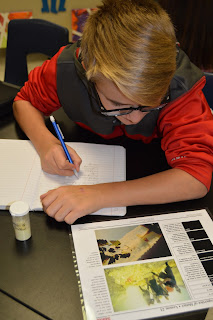Physical and chemical properties can be used to classify and identify substances.
Metals and nonmetals
are two major groups of elements that have different physical properties.
Physical properties of metals include:
● Luster—Having a shiny surface or reflecting light brightly
● Conductors—Heat and electricity move through them easily
● Malleable—Ability to be hammered into different shapes
● Ductile—Ability to be drawn into a wire
● High density—Heavy for their size
Physical properties of nonmetals include:
● Dull—Not shiny
● Nonconductors—Heat and electricity do not move through them easily
● Brittle—Break or shatter easily (solids)
Physical properties can be observed and measured without changing the kind of matter being studied. The
following physical properties can be used to help identify a substance:
Melting Point:
● The temperature at which a solid can change to a liquid
● Unchanging under constant conditions
● Example: Ice melts to form liquid water at 0
oC (32o
F).
Boiling Point:
● The temperature at which a liquid changes from a liquid to a gas.
● Boiling begins when bubbles form throughout, grow larger, rise to the surface, and burst.
● As long as the substance is boiling the temperature of the liquid remains constant (at the boiling point).
● Boiling point is unchanging under constant conditions for a given substance.
● Example: The boiling point for pure water at sea level is 100oC ( 212o
F).
Density:
● The relationship between the mass of a material and its volume
● Substances that are denser contain more matter in a given volume
●The density of a substance is unchanging no matter how large or small the sample of the substance.
● Example:
○ Lead is a very heavy, dense metal. The density of lead is much greater than the density of
the very light metal, aluminum.
○ Generally, metals have a heavier density than nonmetals.
Conductivity:
● The ability to act as an electrical conductor or an electrical insulator is based on the solid’s ability to
complete an electric circuit, i.e., conduct electricity.
● Materials with high conductivity are called electrical conductors because they allow current to flow
easily.
● Materials with low conductivity are called electrical insulators (nonconductors) because they do not
allow current to flow.
● Example: Most metals are electrical conductors while nonmetals are electrical insulators.
Color:
● Color can be used to help identify a substance, along with other properties.
● By itself, color is not a significant identifier of a substance.
● Absence of color is also a physical property.
Hardness:
● The relative resistance of a metal or other material to denting, scratching, or bending.
Magnetism:
● The property of reacting to the forces exerted by magnets



No comments:
Post a Comment